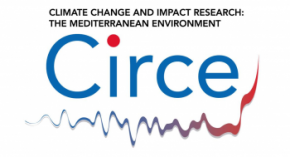CIRCE Foundation Paper – part 3

Adaptation as a Socio-Instiutional Learning Process
As is evident in the literature review above, adaptation is being approached in a number of different ways. Climate change adaptation is often depicted as a one-off decision to reduce future vulnerability. This may be seen in studies that attempt to predict the impacts of climate change and then represent adaptation as an incremental reduction in future impacts. For example, the benefit of replacing one cultivar with another is shown as an adaptation scenario. In this view, the common indicators of adaptive capacity are related more directly to vulnerability (and indeed are often the same indicators). For example, GDP per capita is suggested as an indicator of the range of options available, the ability to assess risks and options, and the means to adopt expensive choices.
The alternative approach might be to depict adaptation as a series of decision nodes over time “a pathway of evaluation of risks, identifying options, choosing an option, monitoring the outcome and then iterating the process at the next decision node”. This is the Act-then Learn-then Act again model from decision science, and is relates closely to much of the work on Adaptive Resources Management, which focuses on dealing with high levels of uncertainty and possible thresholds in the system being managed. Included in several chapters in the IPCC AR4, it is a more appropriate paradigm than approaches such as cost-benefit analysis that assume a high ability to predict future risks or outcomes of decisions.
The decision-pathway approach suggests several key features related to climate change. The adaptation baseline is the sequence and timing of decisions that would be made in the absence of climate change-specific policies or actions. For instance, projects proposed under the National Adaptation Programmes of Action (NAPAs) need to establish a baseline of development actions that are planned at present and then show how climate change adaptation alters that baseline.
Climate change adaptation pathways might bring forward a decision node for consideration at an earlier stage (e.g. plans to upgrade flood defenses), choose a different action from actions that are already identified (e.g. invest in demand management rather than new water supplies), or add new options that would not have been considered previously (e.g. building a constituency for green belts that are biodiversity migration corridors).
In some cases, the existing path may be inadequate. Early adaptation actions may create dead ends, nodes that have few practicable options and require a jump to an entirely different pathway. One example would be building codes that result in large numbers of buildings unable to be renovated because of the costs of the new standards. A new node might be created, as in the NAPA processes. It is possible to depict dead ends and new nodes as a jump to a new pathway, one based on fundamentally different values, socio-institutional regimes and decision frameworks.
This socio-institutional approach to adaptation decision making requires new approaches to indicators of the competence to carry out adaptation (which might be termed adaptive capacity). The indicators would focus on the process, from the drivers of policy to policy and strategy to actions, rather than the outcome in hypothetical reductions in future impacts or artificial constructions of present vulnerability. A ‘policy-action’ matrix helps to organise an audit of competence in adaptation planning. The limits to adaptation are then barriers to progressing from one level of competence to another, in connecting policy to strategy to action, and in making decisions at specific nodes in a pathway.
Further Reading
CIRCE Foundation Papers
CIRCE Foundation Paper – Part I Introduction
CIRCE Foundation Paper – Part II Key Concepts
(0) Comments
There is no content